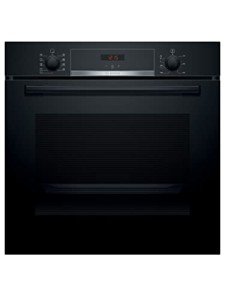The Rise of Built-In Ovens: A Seamless Approach to Modern Cooking
In modern cooking areas, where style aesthetic appeals mix effortlessly with performance, one home appliance stands out as a true game changer: the built-in oven. As property owners and chefs alike continue to look for innovative services that enhance their cooking experience, built-in ovens have actually ended up being increasingly popular. This post checks out the advantages, factors to consider, and trends surrounding built-in ovens, highlighting why they are a vital feature in contemporary cooking areas.
What is a Built-In Oven?
A built-in oven is a kitchen appliance created to be integrated into the kitchen cabinetry of a cooking area rather than standing alone. Unlike conventional freestanding ovens, which can be moved and positioned anywhere, built-in ovens can be found in various styles and sizes to fit particularly within designated areas. Readily available in single or double configurations, these ovens use a structured appearance that complements modern-day cooking area designs.
Benefits of Built-In Ovens
1. Space-Saving Design
One of the most attractive benefits of built-in ovens is their space-saving style. By integrating the oven into cabinetry, you can free up important counter and flooring space. This is particularly useful in smaller sized kitchens, where taking full advantage of space is vital. Built-in ovens can be installed at eye level, making them more available and reducing the requirement to flex down.
2. Visual Appeal
Built-in ovens contribute to a sleek and cohesive cooking area style. Offered in different finishes-- such as stainless-steel, black, white, and custom cabinets-- they can mix effortlessly into the total decor. This aesthetic appeal improves the kitchen's visual harmony and raises the space, producing a contemporary and sophisticated environment.
3. Boosted Functionality
Many built-in ovens come equipped with sophisticated cooking innovations, such as convection cooking, steam ovens, and wise features. These improvements enable for flexible cooking options, making it simpler to achieve professional-level results in the house. Smart built-in ovens can even link to Wi-Fi, making it possible for users to control the oven from another location, get notifications, and access a variety of cooking programs and recipes.
4. Enhanced Ventilation
Because built-in ovens can be integrated with kitchen area hoods and ventilation systems, they can assist keep much better air quality and decrease cooking smells. This is especially substantial for those who like to cook with aromatic spices and ingredients, as an efficient ventilation system can keep the cooking area comfortable and inviting.
5. Personalization Options
Built-in ovens provide a large range of personalization choices to fit individual cooking designs and needs. From professional-grade appliances with several cooking modes to compact designs for smaller kitchens, house owners can pick the oven that fits their specific requirements. Lots of makers also offer personalized front panels, enabling you to match the oven's appearance to your cabinetry for a truly unified look.
Considerations When Choosing a Built-In Oven
While built-in ovens have many advantages, there are necessary factors to consider to remember before buying:
1. Rate
Built-in ovens usually feature a greater cost tag than their freestanding counterparts due to their style and setup requirements. It's essential to consider both the expense of the oven and any extra expenses associated with cabinets modifications or installation.
2. Setup Requirements
Setting up a built-in oven often requires expert help, especially if you need to modify existing cabinetry. Make sure that you think about any costs connected with setup, consisting of labor and possible cabinets adjustments.
3. Size and Dimensions
Before acquiring a built-in oven, determine the designated area accurately to ensure a correct fit. Built-in ovens come in various sizes and configurations, so choosing one that lines up with your needs and cooking area design is essential.

4. Ovens And Hobs of life and Usage
Consider your cooking practices and requires when picking a built-in oven. If you regularly host large events, a double oven might be more beneficial. On the other hand, if you have a compact cooking area, a single-wall oven may be enough.
Patterns in Built-In Ovens
The kitchen area home appliance market is continuously developing, and built-in ovens are not exempt from emerging trends. Some current patterns consist of:
Smart Technology Integration: With the rise of clever home innovation, built-in ovens now often feature connection alternatives. This allows users to keep track of cooking progress and change settings through mobile apps.
Energy Efficiency: As sustainability becomes a top priority, many producers are purchasing energy-efficient built-in ovens that reduce energy consumption while keeping efficiency.
Multi-functional Designs: Built-in ovens now provide features such as air frying, sluggish cooking, and steaming, supplying versatility that meets a large range of cooking approaches.
Conclusion
Built-in ovens unquestionably represent a perfect blend of style, function, and benefit in today's kitchens. As more homeowners go with this modern-day service, the focus moves to producing a cooking area that is as visually pleasing as it is useful. Whether you are constructing a new home or renovating your cooking area, thinking about a built-in oven might raise your culinary experience and transform your kitchen area into an elegant and functional sanctuary. With a variety of alternatives offered and continuous innovations in technology, built-in ovens stay a standout choice for both newbie cooks and cooking enthusiasts alike.
